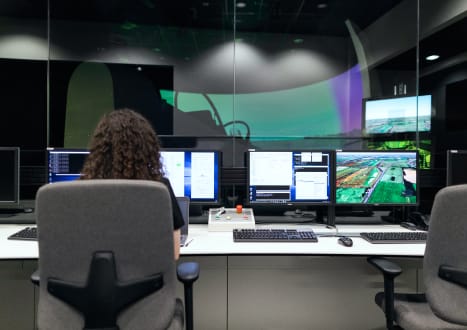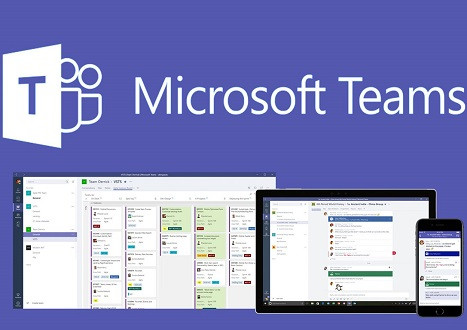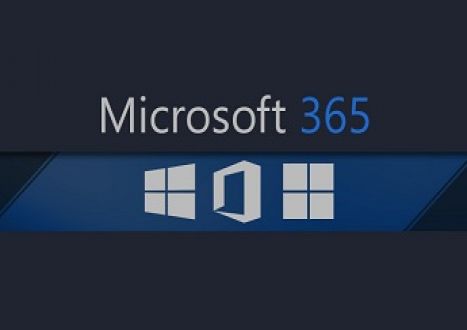- Home
- Video Courses
- Certifications
- AZ-140: Configuring and Operating Microsoft Azure Virtual Desktop Dumps


AZ-140: Configuring and Operating Microsoft Azure Virtual Desktop Certification Video Training Course
AZ-140: Configuring and Operating Microsoft Azure Virtual Desktop Certification Video Training Course includes 79 Lectures which proven in-depth knowledge on all key concepts of the exam. Pass your exam easily and learn everything you need with our AZ-140: Configuring and Operating Microsoft Azure Virtual Desktop Certification Training Video Course.
Curriculum for Microsoft Azure AZ-140 Certification Video Training Course










AZ-140: Configuring and Operating Microsoft Azure Virtual Desktop Certification Video Training Course Info:
The Complete Course from ExamCollection industry leading experts to help you prepare and provides the full 360 solution for self prep including AZ-140: Configuring and Operating Microsoft Azure Virtual Desktop Certification Video Training Course, Practice Test Questions and Answers, Study Guide & Exam Dumps.
AZ-140: Setup, Configuration, and Administration of Azure Virtual Desktop
Course Overview
The AZ-140 training course is designed to give professionals a complete understanding of Microsoft Azure Virtual Desktop, often referred to as AVD. This technology provides a powerful, scalable, and secure way to deliver desktop applications and environments through the cloud. By mastering the objectives of this course, learners will develop the knowledge required not only to pass the AZ-140 certification exam but also to implement these solutions in real business scenarios. Azure Virtual Desktop is one of the fastest-growing services in cloud computing. Many organizations are moving their desktop infrastructure to the cloud to reduce cost, simplify management, and improve security. This course helps professionals step into that demand by ensuring they can configure, deploy, manage, and optimize virtual desktop environments. The training focuses on equipping learners with practical skills. Instead of just preparing for theoretical exam questions, the content emphasizes how administrators can work with Azure Virtual Desktop in production settings. Every topic covered connects directly to workplace requirements.
Why This Course Matters
Organizations across the world are moving away from traditional desktop environments to cloud-first strategies. The global shift toward remote and hybrid work has made Azure Virtual Desktop a critical solution. Professionals who gain expertise in this platform will find themselves more valuable in today’s IT landscape. Completing this course allows learners to confidently work with virtual desktops, application streaming, identity integration, and remote security. It is not just about the certification but about becoming skilled in delivering real-world solutions.
Certification Alignment
This course is aligned with the Microsoft Certified: Azure Virtual Desktop Specialty certification exam. By following this training, learners are guided through every knowledge area Microsoft evaluates. This ensures confidence when sitting for the exam and the ability to demonstrate expertise to employers. The AZ-140 exam focuses on five key areas. The course breaks them into modules that cover these objectives step by step. Learners will find the structure designed in a way that makes complex cloud concepts easier to digest.
Course Structure
The course is divided into modules that progressively build on one another. Each module introduces concepts, explores real-world examples, and then demonstrates how to apply them in Azure. The training is not about memorization but about developing real competency. Every section provides context, technical detail, and insights into how features can be used in practice.
Introduction to Azure Virtual Desktop
This module begins with a comprehensive introduction to Azure Virtual Desktop. Learners discover what the service is, how it has evolved from Windows Virtual Desktop, and why organizations are adopting it. The section explains the core architecture. It covers how AVD separates control plane components managed by Microsoft from customer-managed resources like session hosts and images. Understanding this separation is fundamental because it influences how administrators design and secure their environments. The introduction also highlights licensing requirements. While AVD is included with many Microsoft 365 subscriptions, learners need to understand the different options and what features are included. This knowledge is essential for both exam preparation and real implementation.
Planning an AVD Deployment
Planning is a crucial step that determines the success of an Azure Virtual Desktop project. This module focuses on assessing business needs and translating them into technical requirements. Learners explore concepts like host pool design, scaling strategies, and image management. Each of these elements has significant cost and performance implications. For instance, understanding when to use pooled desktops versus personal desktops can affect user experience and cost efficiency. This module also addresses prerequisites, such as Azure Active Directory integration and networking requirements. Without proper planning, deployment challenges can arise that are costly to fix later.
Implementing an AVD Environment
Once planning is complete, learners move to the deployment phase. This module covers the creation of host pools, session hosts, and application groups. The focus is on practical steps: deploying session hosts from Azure Marketplace images, creating custom images, and joining them to Azure Active Directory or hybrid environments. The hands-on approach ensures learners gain confidence with these processes. This section also explores user assignment. Administrators learn how to allocate resources to users or groups, ensuring the right applications are delivered securely.
Managing Access and Security
Security is central to any cloud environment, and AVD is no exception. This module covers how to secure access to resources using Azure Active Directory, conditional access policies, and multi-factor authentication. Learners gain insights into how role-based access control works within Azure. They also study how to ensure users access only what they need while administrators maintain full visibility. The section also highlights how to integrate Microsoft Defender for Endpoint with AVD environments, enhancing protection against threats.
Monitoring and Performance Optimization
Managing an environment after deployment requires careful monitoring. This module equips learners with the skills to track performance, identify issues, and optimize usage. Learners study how to use Azure Monitor and Log Analytics to gain insights into session performance. They also explore scaling strategies, such as autoscaling host pools to match user demand. Performance optimization ensures that users have a seamless experience while organizations control costs effectively.
Business Continuity and Disaster Recovery
Enterprises must prepare for unexpected disruptions. This module covers how AVD can be made resilient to failures. The focus is on high availability strategies, backup solutions, and recovery planning. Learners understand how to ensure continuity of service even in case of regional outages or infrastructure issues. This knowledge is vital not only for passing the exam but also for building trust with organizations that rely on virtual desktops.
Troubleshooting and Support
No environment is free from issues. This module provides the framework for troubleshooting AVD deployments. Learners are guided through common problems, such as connectivity issues, application errors, and session host failures. The section explains how to use diagnostic tools to identify root causes quickly. Developing troubleshooting skills ensures that learners can not only configure environments but also maintain them effectively.
Governance and Compliance
Enterprises must meet compliance requirements and follow governance practices. This module explores how AVD integrates with Azure governance features such as policies, management groups, and compliance monitoring. Learners discover how to apply standards across resources and ensure regulatory requirements are met. This knowledge is especially valuable for organizations operating in industries with strict compliance needs.
Cost Management in AVD
Cloud resources bring flexibility but also introduce the challenge of cost management. This module explains how to calculate, monitor, and optimize costs associated with Azure Virtual Desktop. Learners study pricing models, reserved instances, and scaling techniques. The goal is to help administrators deliver value without exceeding budget constraints.
Future Trends in Virtual Desktops
The final module looks ahead at the evolution of desktop virtualization. Learners explore how technologies like Windows 365 integrate with AVD and how hybrid models will shape the future of remote work. This forward-looking perspective prepares learners not just for today’s demands but also for tomorrow’s challenges.
Learning Approach
This course emphasizes practical labs where learners create, configure, and manage AVD environments. Hands-on practice reinforces theoretical concepts and builds confidence. Examples from real business environments are included in each module. Learners see how organizations across industries use Azure Virtual Desktop to meet unique challenges. Each section connects directly to exam objectives. Practice questions and review sessions help learners measure progress and prepare for certification success.
Expected Outcomes
By the end of this course, learners will understand AVD architecture, deployment strategies, security configurations, performance monitoring, and disaster recovery planning. Learners gain not only a certification but also real-world skills. These skills position them for roles such as cloud administrators, virtual desktop specialists, and IT consultants. Azure Virtual Desktop expertise is highly valued. Completing this course can open opportunities in enterprises, consulting firms, and managed service providers.
Requirements of the Course
The requirements for the AZ-140 training course are designed to prepare learners with the right foundation before diving into advanced concepts. Azure Virtual Desktop is a specialized service that builds on knowledge of cloud computing, networking, security, and identity management. Learners will benefit most if they meet the suggested prerequisites.
General Technical Knowledge
Learners should already have a solid understanding of Microsoft Azure fundamentals. This includes knowledge of resource groups, subscriptions, and the Azure portal. A baseline familiarity with virtual networks, storage accounts, and identity management is recommended. This ensures that learners can follow the course material without struggling with the basics of cloud operations.
Experience with Windows Operating Systems
Since Azure Virtual Desktop delivers Windows-based environments, learners should have experience working with Windows client and server operating systems. This includes understanding how to configure settings, manage users, and install applications. Practical experience with Windows 10, Windows 11, and Windows Server versions helps learners easily grasp how these systems behave in a virtualized cloud context.
Networking Knowledge
Networking is at the heart of Azure Virtual Desktop. Learners should have knowledge of virtual networks, subnets, VPN connections, and firewalls. They should also understand DNS resolution and how routing works within Azure. Without networking knowledge, troubleshooting connectivity issues in AVD can be challenging. A solid foundation in TCP/IP concepts will also be useful during the course.
Identity and Access Management
Because Azure Virtual Desktop integrates closely with Azure Active Directory, learners should be familiar with identity and access concepts. This includes knowledge of users, groups, roles, and conditional access policies. A good grasp of authentication and authorization processes ensures that learners can successfully configure secure environments. Understanding hybrid identity, such as Azure AD Connect, is also helpful.
Virtualization Concepts
Virtualization underpins the entire Azure Virtual Desktop service. Learners should understand how virtualization works in general. This includes knowledge of virtual machines, images, snapshots, and resource allocation. Familiarity with hypervisors like Hyper-V or VMware is an advantage but not required. Those with experience managing on-premises virtualized environments will find it easier to transition to cloud-based virtual desktops.
Administrative Experience
The course assumes that learners have experience working as IT administrators, cloud engineers, or related roles. This background helps when navigating administrative tasks such as managing users, configuring policies, and monitoring systems. Learners with prior experience supporting end-user environments will quickly recognize how AVD addresses familiar challenges in new ways.
Hands-On Comfort with Azure
Since this course involves practical lab work, learners should be comfortable navigating the Azure portal and using tools like PowerShell or the Azure CLI. Many deployment and configuration tasks rely on automation, and familiarity with scripting helps learners follow the course effectively. Comfort with deploying resources in Azure and troubleshooting errors will make the training more impactful.
Recommended Certifications Beforehand
While not mandatory, completing certifications such as AZ-104 Microsoft Azure Administrator Associate or AZ-900 Microsoft Azure Fundamentals is highly beneficial. These certifications cover baseline knowledge that supports the AZ-140 material. Learners with these certifications will have an easier time progressing through the advanced scenarios in this course.
Hardware and Software for Learning
Learners should ensure they have access to a reliable computer with internet connectivity. A minimum of 8 GB of RAM is recommended, though 16 GB is preferable for running local virtual environments alongside cloud labs. A modern browser such as Microsoft Edge, Google Chrome, or Mozilla Firefox is required for accessing the Azure portal. Learners may also need to install tools such as Visual Studio Code, Azure PowerShell modules, and the Remote Desktop client.
Access to an Azure Subscription
To complete the practical components of this course, learners need access to an Azure subscription. Microsoft often provides free trial subscriptions that learners can use for training. For those with enterprise access, a sandbox environment is ideal to avoid disrupting production workloads. Without access to Azure, learners will struggle to complete lab exercises and gain hands-on experience.
Time Commitment
The course requires a significant investment of time. Learners should allocate several weeks to complete all modules, practice labs, and review sessions. A suggested pace is to dedicate at least ten to fifteen hours per week for study and practice. Rushing through the content will not provide the depth of understanding needed to succeed in the certification exam or real-world applications.
Mindset and Learning Approach
Beyond technical requirements, learners need the right mindset. Success in this course requires curiosity, persistence, and problem-solving skills. Cloud environments are dynamic, and challenges often require creative solutions. Learners who enjoy troubleshooting and experimenting with configurations will thrive in this course.
Collaboration Skills
In many organizations, Azure Virtual Desktop is deployed as part of a team effort. Learners should be prepared to collaborate with networking engineers, security teams, and end-user support staff. Developing communication and teamwork skills will help learners apply what they learn in this course to real-world projects.
English Proficiency
Since the AZ-140 certification exam is administered in English, learners should be comfortable with technical English. This includes understanding documentation, reading error messages, and following course material written in English. Language proficiency ensures that learners can interpret exam questions accurately and apply knowledge correctly.
Previous Cloud Experience
Learners with experience in other cloud services, such as AWS or Google Cloud, will find that many concepts transfer to Azure. Understanding general cloud concepts like elasticity, resource provisioning, and subscription management provides an advantage. However, the course focuses specifically on Microsoft Azure technologies, so learners will need to adapt their prior knowledge.
Security Awareness
Security is a critical part of Azure Virtual Desktop. Learners should have an awareness of information security principles, such as encryption, access control, and auditing. This foundation helps learners understand why certain configurations are necessary and how they contribute to protecting data and systems.
Realistic Expectations
It is important for learners to set realistic expectations. The AZ-140 certification is a specialty-level exam that requires more than just memorization. Learners should expect to engage deeply with concepts, spend time practicing in Azure, and review multiple times before feeling fully prepared.
Organizational Support
Learners employed in IT roles may benefit from organizational support. Employers can provide access to Azure subscriptions, lab environments, and mentoring. Organizations may also support learners by giving them time to study and apply skills in live projects.
Financial Considerations
While the course itself may be provided through training providers, learners should consider the cost of the certification exam and Azure subscription usage during practice. Although costs can be minimized by carefully managing resources, learners should budget for the investment. The return on investment comes in the form of career growth and expanded opportunities.
Common Challenges for Learners
Many learners face challenges with time management and lab access. Others may find certain concepts, such as networking or hybrid identity, more difficult to grasp. Recognizing these challenges early allows learners to seek support through forums, study groups, or instructors. Persistence is key to overcoming these difficulties.
Why Prerequisites Matter
Meeting the prerequisites ensures learners gain the maximum benefit from the training. Without baseline knowledge, learners may become frustrated or overwhelmed. Prerequisites create a strong foundation so that the advanced material in the AZ-140 course feels achievable.
Preparing Yourself for Success
Before starting the course, learners should review Azure basics, refresh their Windows administration skills, and ensure they have access to the necessary tools. Taking time to prepare will make the learning experience smoother and more rewarding. A proactive approach to preparation is one of the best predictors of success in this training.
Continuous Learning Beyond the Course
The requirements of this course also emphasize the importance of continuous learning. Technology evolves quickly, and Azure services are updated frequently. Learners who commit to ongoing study and hands-on experimentation will remain current and valuable to their organizations.
Course Description
The AZ-140 training course provides in-depth knowledge of Microsoft Azure Virtual Desktop, preparing learners to design, deploy, manage, and optimize virtual desktop environments in the cloud. The course emphasizes hands-on experience, ensuring learners gain practical skills alongside theoretical understanding. It combines real-world scenarios, demonstrations, and exercises to ensure that learners can apply their knowledge effectively.
This course covers all key areas necessary for mastering Azure Virtual Desktop. Learners explore topics such as architecture, security, access management, monitoring, troubleshooting, and cost optimization. Each module is carefully structured to build competence progressively, beginning with foundational concepts and advancing to complex configurations.
Azure Virtual Desktop allows organizations to deliver Windows desktops and applications to users anywhere, on any device. The course demonstrates how to leverage this technology to support remote and hybrid work models, improve security, and reduce operational costs. Learners understand how to align AVD deployments with business objectives while maintaining efficiency and control.
The course also explores integration with other Microsoft services such as Microsoft 365, Teams, and Microsoft Endpoint Manager. Learners will see how these services work together to provide a seamless experience for end users while simplifying management for IT administrators.
Learners engage with practical labs that simulate real-world deployments. These exercises reinforce concepts such as creating host pools, configuring session hosts, assigning applications, and managing user profiles. By practicing these tasks, learners gain confidence in deploying AVD solutions in production environments.
The training emphasizes security and compliance. Learners learn to configure secure access using Azure Active Directory, conditional access, and multi-factor authentication. Governance features such as policies, management groups, and monitoring are explored to ensure deployments meet regulatory requirements.
Monitoring and optimization are core aspects of the course. Learners gain skills in tracking performance using Azure Monitor, analyzing logs, and implementing autoscaling strategies. These capabilities ensure users receive consistent, high-quality experiences while controlling costs and improving resource efficiency.
Disaster recovery and business continuity are also integral parts of the course. Learners explore high-availability designs, backup strategies, and recovery planning. By understanding these elements, learners ensure that virtual desktop environments remain resilient under unforeseen circumstances.
Troubleshooting is emphasized throughout the course. Learners practice diagnosing common issues, using diagnostic tools, and resolving problems efficiently. This approach helps learners develop critical thinking and problem-solving skills essential for real-world administration.
The course also introduces advanced concepts such as image management, application layering, and hybrid identity integration. Learners learn how to create custom images, optimize application delivery, and integrate with on-premises Active Directory environments.
Cost management is another focus area. Learners explore pricing models, resource allocation, and scaling techniques to optimize costs. By understanding how to balance performance with expense, learners gain insights into providing cost-effective solutions for their organizations.
Future trends in virtual desktop technology are discussed to prepare learners for evolving IT landscapes. The course covers innovations such as Windows 365, cloud PCs, and hybrid work strategies. Learners gain awareness of emerging solutions and how to leverage them in enterprise environments.
The course includes guidance on exam preparation. Each module aligns with AZ-140 exam objectives, ensuring that learners are not only gaining practical skills but also preparing effectively for certification. Practice exercises and review sessions allow learners to measure progress and identify areas for improvement.
By the end of the course, learners will have a comprehensive understanding of Azure Virtual Desktop architecture, deployment strategies, security, monitoring, troubleshooting, and optimization. This knowledge enables learners to implement, manage, and maintain AVD solutions effectively in real-world scenarios.
Who This Course Is For
The AZ-140 training course is designed for IT professionals who want to specialize in Azure Virtual Desktop and cloud-based desktop solutions. This includes system administrators, cloud administrators, desktop support specialists, and IT consultants who manage or plan to manage virtual desktop environments.
Cloud engineers and architects will benefit from the course by learning how to design scalable, secure, and cost-effective AVD deployments. Understanding the architecture and deployment considerations prepares them to integrate AVD into larger cloud infrastructure projects.
Student Feedback
Similar Microsoft Video Courses












































































































































































































































Only Registered Members Can Download VCE Files or View Training Courses
Please fill out your email address below in order to Download VCE files or view Training Courses. Registration is Free and Easy - you simply need to provide an email address.
- Trusted By 1.2M IT Certification Candidates Every Month
- VCE Files Simulate Real Exam Environment
- Instant Download After Registration.
Log into your ExamCollection Account
Please Log In to download VCE file or view Training Course
Only registered Examcollection.com members can download vce files or view training courses.




